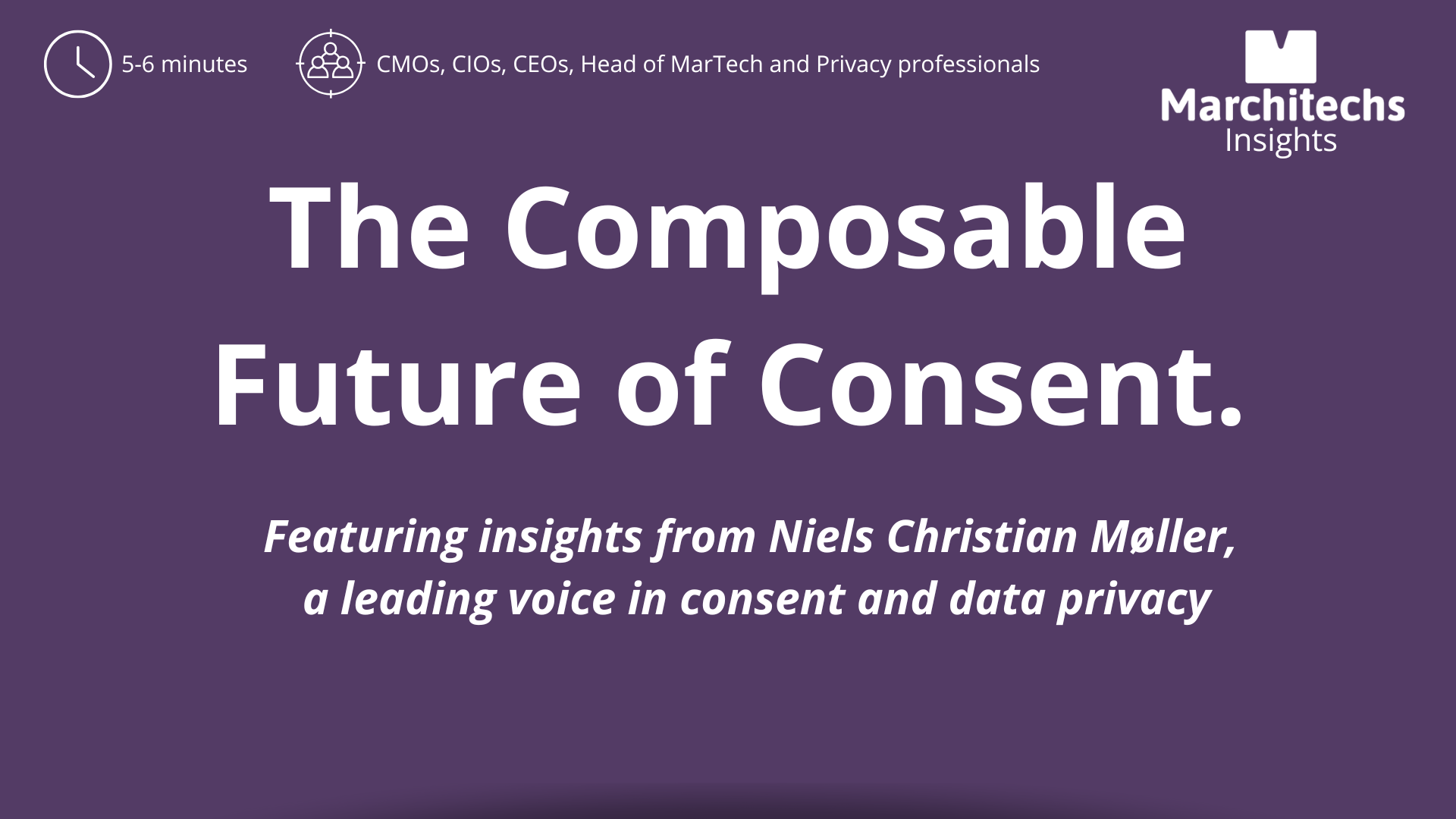
Featuring Niels Christian Møller, Co-founder & CEO of Fluid A/S
Consent and preference management are evolving fast. Businesses are moving away from rigid, all-in-one systems toward composable setups that connect marketing, web, and CRM consent in a single, flexible layer.
In this interview, Niels Christian Møller, shares how a Unified Consent & Preference Management (UCPM) approach helps organizations build trust, stay compliant, and keep their existing tools. Key takeaways:

Niels: From the beginning, RubiqCloud has been composable by design, so continuing down that road towards UCPM is a natural path for us.
In consent management, composable means flexible. Some vendors try to do everything in one system, from consent to cookie handling and analytics, but that often creates rigidity. RubiqCloud takes a different route. We focus on managing consents and preferences, integrating with trusted tools like Cookiebot or Google Tag Manager for everything else.
That way, companies can keep their existing web stack while gaining centralized control over consent and preference data.
“UCPM is a unified layer that connects marketing and web consent in one place. It gives companies a flexible solution that fits their business needs, existing systems, and level of digital maturity.”
Niels: There’s no one-size-fits-all approach. The key is to start where your business gets the most value, and for many, that means connecting marketing consent to known users in CRM or customer systems. That’s where data quality and activation potential are highest.
Cookie consent can be a good entry point, but it rarely stands on its own, it’s just one piece of the bigger consent picture.
RubiqCloud helps companies build their consent infrastructure gradually, step by step, whether they start with marketing, web, or CRM consents. The important thing is to choose a solution that grows with your systems and your level of digital maturity.
Niels: One of the biggest challenges is internal fragmentation. Web and CRM are often owned by different teams, which makes it hard to create a unified consent view.
There’s also a widespread belief that cookie consent alone is enough, but that only covers part of the user journey. Without connecting it to marketing and CRM systems, businesses can’t personalize or build real trust.
“Organizations struggle to assign ownership for UCPM—should it sit with legal, marketing, or IT?”
And that’s part of the problem. Consent is often treated as a compliance checkbox, not a driver of customer experience. But consent is about permission, and preference is about choice. When that choice isn’t built into the customer experience, or tied to KPIs like engagement or satisfaction, adoption slows.
Niels: Absolutely. The Nordic countries have had some of the strictest data privacy regulations for years, but regulation alone doesn’t explain it.
It’s also cultural. In Denmark and across the region, consent is viewed as a natural part of customer relationships.
“Nordic marketing professionals understand that consents come before marketing.”
That mindset has helped the region stay ahead in data ethics and customer trust. For us, this foundation makes it easier to scale. While we’re a smaller operator compared to some leading U.S. firms, our UCPM solution is gaining traction across Europe,
Consent may look technical, but it’s really about trust. A unified, composable approach helps organizations respect customer choices, connect marketing and data teams, and create lasting relationships built on transparency.
If you’re exploring how to modernize your consent and preference management, here are three practical ways to move forward:

Coop’s personalization strategy overhaul shows the power of data, automation, and ownership in driving measurable results
Get insights on how to automate omnichannel campaign execution and improve business impact with personalization.
Get insights on how journeys orchestration is converging from Marketing Automation to CDP platforms.
You need a CX data strategy to execute your CX business strategy.
Get insights on how to get ideal balance between monetizing and being in control of your customer data.
The complexity of today's MarTech stack is making Business and IT alignment a crucial MarTech discipline.
Get insights on how to facilitate CMO and CIO collaboration.
©2025 Marchitechs. All rights reserved. Privacy Policy